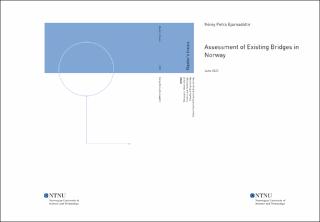| dc.description.abstract | The Norwegian Public Roads Administration maintains the road network in Norway. The administration has its own guidelines for the inspection and capacity assessment of bridges, of which maintenance decisions are based on. With a large portfolio of ageing and deteriorating bridges, an efficient and systematic way for deciding on optimal methods and timing for the maintenance of bridges is very valuable for bridge managers.
The objective of this thesis is to explore and illustrate the potential that a decision making framework concerning assessments of existing bridges in Norway would bring. In the study, an emphasis was put on reinforced concrete structures subject to deterioration due to carbonation induced corrosion and chloride induced corrosion. Common condition assessment and repair and rehabilitation methods were reviewed. An example was established to illustrate the process of determining the optimal inspection and repair strategy using Bayesian decision analysis. Current inspection practices at the administration were identified and an interview was conducted with an employee to get further insight into their methods. Service life modelling was introduced as a tool that can be used to predict damage development and to plan maintenance measures. Recent inspection and capacity assessments of an existing bridge performed by the administration were presented. Finally, an example illustrating the application of the service life modelling approach for an existing bridge was established.
The study shows that the Bayesian decision method is effective to find an optimal solution in a consistent way. The inspection practices currently used by the Norwegian Public Roads Administration can be improved by implementing probabilistic methods. Risk and vulnerability analyses should be a standardised routine linked to the inspection of every bridge in the system. Predictive deterioration models have the potential to guide decision making in bridge management. The models can be updated by incorporating inspection data, resulting in better accuracy. Same goes for the capacity assessment method used at the Norwegian Public Roads Administration, which can be improved by using probabilistic methods with updating of parameters through inspection results. The probabilistic models can be adapted to include deterioration. | |
